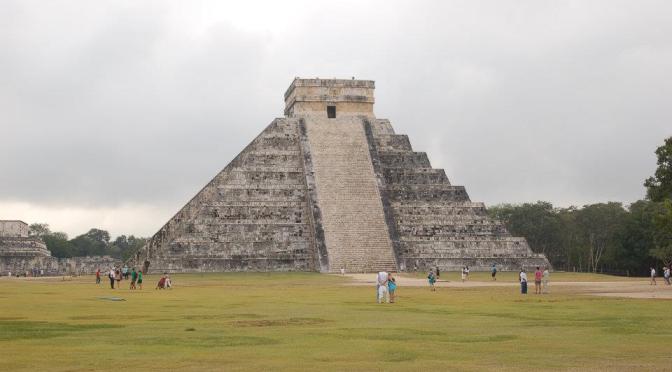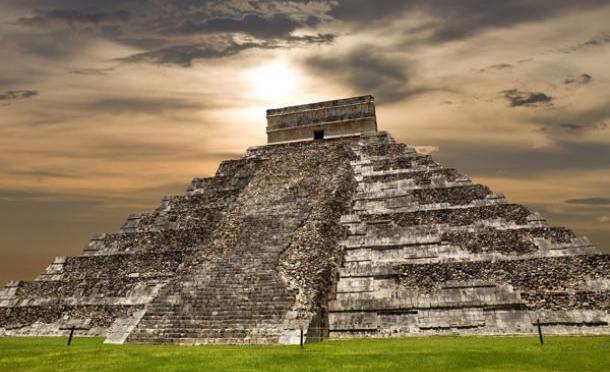The Fourth Phase of Water
.
Does water have a fourth phase, beyond solid, liquid and vapor?
.
.
The Fourth Phase of Water
University of Washington Bioengineering Professor Gerald Pollack explores this question. Not all water is H2O, a radical departure from what you may have learned from textbooks.
Pollack received his PhD in biomedical engineering from the University of Pennsylvania in 1968. He then joined the University of Washington faculty and is now professor of Bioengineering. His interests have ranged broadly, from biological motion and cell biology to the interaction of biological surfaces with aqueous solutions. His 1990 book, Muscles and Molecules: Uncovering the Principles of Biological Motion, won an “Excellence Award” from the Society for Technical Communication; his more recent book, Cells, Gels and the Engines of Life, won that Society’s “Distinguished Award.”
Pollack received an honorary doctorate in 2002 from Ural State University in Ekaterinburg, Russia, and was…
View original post 183 more words
Did the Ancient Egyptians know the Distance between the Inner Planets?
By David Carr

Over the centuries researchers have wondered what the significance is to the layout of the Pyramids at Giza. Could they mimic the stars above or possibly hold a secret code hidden within their design? Many believe the three pyramids, one which is smaller and off center from the angle of the other two, is an image of the belt from the constellation Orion. When comparing the layout of the three main pyramids to the night’s sky it becomes obvious the three stars that make up the belt of Orion are almost identical. It seems even more plausible to think this after observing the evidence the Egyptians left behind to prove they were keen observers of the night’s sky. With the advanced knowledge and careful planning it would take to build the pyramids it seems obvious the layout must have been an important part of the design. Could there be more than one reason to build these great monuments in their precise locations? Maybe they do mirror the night’s sky but could there also be other meanings locked within their design? – See more at: http://www.ancient-origins.net/opinion/did-ancient-egyptians-know-distance-between-inner-planets-001841#!bdc589
Ocean on Saturn’s moon Titan could be as salty as Earth’s Dead Sea
Ocean on Saturn’s moon Titan could be as salty as Earth’s Dead Sea

http://www.sciencedaily.com/releases/2014/07/140702165520.htm
Genesis Quest: The Hunt for the Global Maritime Empire
Genesis Quest: The Hunt for the Global Maritime Empire
We’re going on a Genesis Quest. Wanna come along?
Genesis Quest is a global network of over 40 scientists and explorers. We’re trying to solve the world’s greatest ancient enigmas, even if that means overturning cherished academic, scientific, and religious doctrines. We’ll deploy powerful sensors and robotic search assets that may soon be the envy of archaeologists everywhere; we’ve lined up several university labs to analyze evidence in a scientifically rigorous way; and we intend to achieve unassailable findings based on undeniable and repeatable scientific results. …more
The Mystery of the Lost Ancient Culture of the Maya – Part 2
The Mystery of the Lost Ancient Culture of the Maya – Part 2
by David Carr | 6/5/14

Many alien theorists suggest that the Maya’s belief in gods was based on the visitation of aliens from a more advanced civilization. They believe knowledge was delivered from the stars and was used to build the temples and pyramids of the many different ancient sites throughout the world. But what if ‘the stars’ was not the realm of aliens, but was believed to be the place of the afterlife, where their ancestors resided? – See more at: http://www.ancient-origins.net/opinion/mystery-lost-ancient-culture-maya-part-2-001721#.U4_PoIl0om
The Mystery of the Lost Ancient Culture of the Maya
The Mystery of the Lost Ancient Culture of the Maya
by David Carr | 6/4/14
The collapse of the Maya civilization is considered one of the greatest unsolved mysteries of the ancient world. One can only speculate their downfall from the numerous explanations presented by researchers. The differences of their accounts imply the Maya and their way of life is virtually a complete mystery to our modern way of thinking. How did this advanced society disappear without leaving any solid evidence of their downfall? Is this a sign of a sudden collapse from a cataclysm or, like some believe, abandonment as the result of political upheaval? …more
Is Quantum Mechanics Controlling Your Thoughts?
Is Quantum Mechanics Controlling Your Thoughts?
Science’s weirdest realm may be responsible for photosynthesis, our sense of smell, and even consciousness itself.

How does the climate system work?
Published on Apr 4, 2012
An animation to explain how the climate system works.
For more information on weather and climate, visit www.metoffice.gov.uk
High and Low Pressure
High and Low Pressure
Posted: 4/15/13
by dthompson
If you are a regular viewer of weather broadcasts, chances are you’ve heard the following from your local TV meteorologist: “plenty of sunshine is in store today as high pressure is in control over the area.” Or: “expect rain to spread into the area as a low pressure system approaches.” It is well established that high pressure is generally associated with nice weather, while low pressure is generally associated with cloudy, rainy, or snowy weather. But have you ever wondered why?
In order to understand the types of weather conditions generally associated with high and low pressure systems, we must think “vertically.” The motion of air in the atmosphere above our heads plays a large part in the weather we experience here at earth’s surface. Basically, air cools as it rises, which can cause water vapor in the air to condense into liquid water droplets, sometimes forming clouds and precipitation. On the other hand, sinking air is associated with warming and drying conditions. So the first important point to keep in mind is rising air = moistening, sinking air = drying.
So what does this have to do with high and low pressure? Well, as you may have guessed, high pressure is associated with sinking air, and low pressure is associated with rising air. But why? The answer has to do with the typical air flow around high and low pressure. Physically, it seems to make sense to have air flow from high pressure to low pressure. For reasons I won’t get into in this post, the airflow (due to the Earth’s rotation and friction) is directed slightly inward toward the low pressure center, and slightly outward away from the high pressure center: …more






